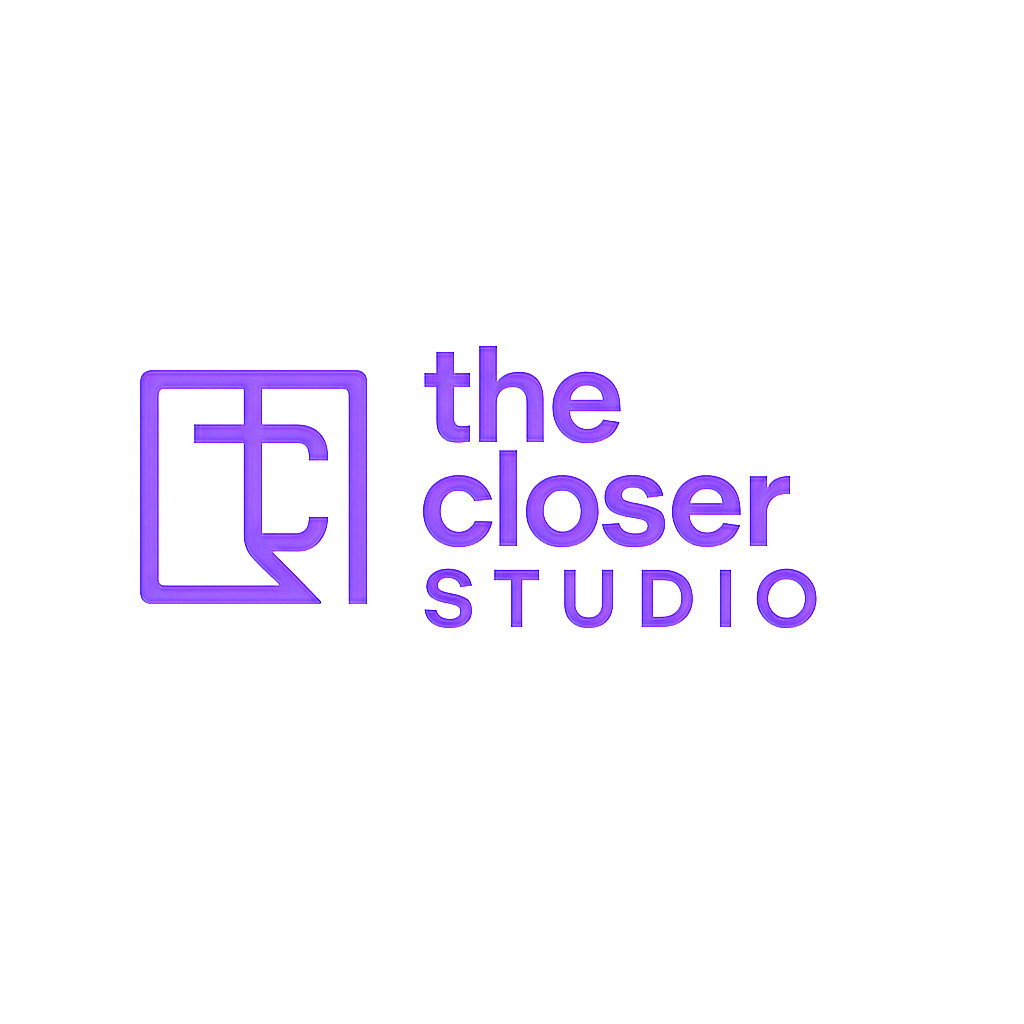Why You Keep Hearing “Let Me Think About It” and How to Turn It Into a Yes
- The Closer Studio

- May 1
- 3 min read
Updated: Oct 8
You crushed the demo.They seemed interested, you asked, “So, what do you think?” and they hit you with it:
“Let me think about it.”
And just like that, the deal goes quiet.
If this sounds familiar, you’re not alone. “Let me think about it” is one of the most common sales objections, especially for reps in early to mid-level roles.
But here’s the thing: it’s usually not a real objection, it's a symptom of something else and if you can fix that, you can start closing more deals.
🚩 What “Let Me Think About It” Really Means
When a prospect says they want to think it over, they’re rarely actually going to spend hours mulling it over at home.
What they usually mean is one of the following:
❌ “I’m not convinced this solves my problem.”
❌ “You haven’t made it feel urgent.”
❌ “I don’t understand the value compared to the price.”
❌ “I don’t want to say no directly, so I’ll delay instead.”
In other words, “Let me think about it” is usually a polite no, unless you know how to re-engage and redirect the conversation.
🧠 Why You Keep Hearing It
If you're hearing this objection consistently, here’s what might be happening:
1. You’re Pitching Too Soon
You may be offering your solution before fully understanding their pain or goals, so your offer doesn’t feel tailored or relevant.
2. You’re Not Creating Urgency
You’ve shown what your product/service does, but haven’t answered:“Why now?”
3. You’re Not Handling Concerns Early
Some reps wait until the end of the call to handle objections. By then, it’s too late, the prospect has mentally checked out.
4. You Don’t Have a Confident Close
You end the call with weak language like:
“Let me know what you decide. I’ll follow up next week and see where you’re at.”
…which gives the prospect an easy out.
✅ How to Turn “Let Me Think About It” Into a Yes
Here’s how top-performing reps flip this objection into a deal:
1. Pre-Handle Objections During Discovery
The best way to handle objections? Don’t let them build up in the first place.
Ask deeper, forward-thinking questions like:
“What’s stopping you from solving this now?”
“If we found the right solution, is anything else standing in the way?”
This surfaces concerns early, when they’re easier to address.
2. Clarify Value Throughout the Call
Don’t save your “pitch” for the end. Reinforce value consistently.
Instead of:
“Our product helps with X…”
Try:
“Based on what you said about [their challenge], here’s how we’d help fix that…”
Link features to their specific pain points, not general benefits.
3. Use the Objection as an Opportunity to Go Deeper
When they say, “Let me think about it,” don’t panic... dig deeper.
Say something like:
🗣️ “Of course, just so I can support you best, what exactly would you like to think over? Is it about timing, cost, or something else?”
This respectful approach invites honesty and keeps the conversation alive.
4. Create a Closing Plan, Together
Instead of saying:
“Okay, I’ll send you the proposal and follow up next week.”
Try:🗣️ “If you decide this is the right fit, what would your next steps look like? Should we get that process moving together?”
✅ This helps them visualise moving forward instead of drifting away.
🚀 Want to Master Objection Handling in Real-Time?
If this objection or others like it are costing you deals, it’s time to work on your sales confidence and technique in the moment.
That’s where the Pro Launch Pad comes in.
With 4 x 60 minute 1:1 coaching sessions each month, we’ll:
Break down real calls you’ve had and fix what’s not working
Role-play common objections so you can handle them with ease
Help you build a custom framework for closing more confidently
Turn “Let me think about it” into “Let’s move forward”
👉 Book the Pro Launch Pad and get the objection-handling skills your pipeline deserves.
🧩 Final Thought
“Let me think about it” doesn’t mean the deal is dead, it means there’s a gap in clarity or confidence somewhere in your call.
With the right coaching and frameworks, you can fill that gap and start hearing “yes” a lot more often.



